Not just cute: How pandas became a politicised symbol around the world
China is known for its "panda diplomacy", where its giant pandas were first gifted and later leased overseas as a sign of important bilateral relations and goodwill. Lianhe Zaobao correspondent Wong Siew Fong looks into how the system has evolved since the 1950s, and whether panda diplomacy still works today.
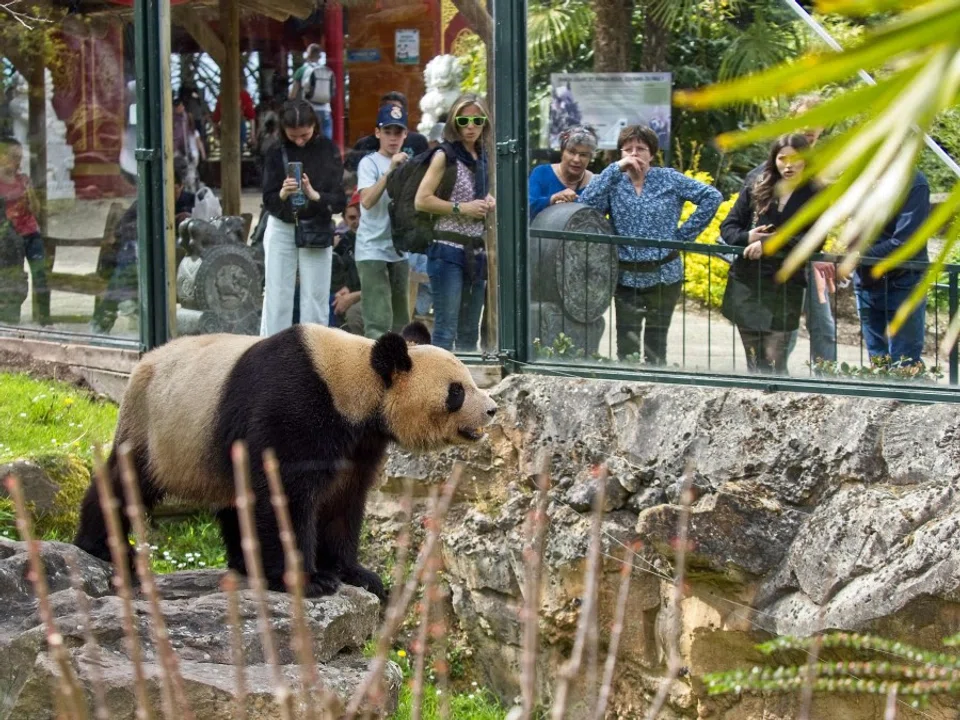
On 20 April 1972, Thelma Catherine "Pat" Nixon, the wife of then US President Richard Nixon, hosted a welcoming ceremony for the newly arrived giant pandas Ling-Ling and Hsing-Hsing at the Smithsonian's National Zoo in the US, two months after Nixon's historic ice-breaking trip to China.
Pat wore a black and white panda pin on her lapel, and beamed as she thanked China for gifting the two giant pandas, saying that "panda-monium is going to break out!"
Her words proved true, as Ling-Ling and Hsing-Hsing became the most iconic symbols of China's panda diplomacy, ushering in a golden era of panda diplomacy that lasted several decades. From 1957 to 1984, China gifted a total of 23 giant pandas to nine countries. There are now at least 60 giant pandas sent to zoos in 18 countries.
The start of panda diplomacy
In an interview with Lianhe Zaobao, E. Elena Songster, a historian at St Mary's College of California and author of Panda Nation: The Construction and Conservation of China's Modern Icon, assessed that China's panda diplomacy has worked well in the past, playing specific roles in each country at different times.

Existing research divides the development of China's panda diplomacy since the founding of the People's Republic of China into three main phases. From the 1950s to 1984, giant pandas were an important tool for China to maintain foreign relations. In 1957, China - not yet a member of the United Nations - sent giant pandas Ping Ping and Qi Qi as special gifts to the Soviet Union to celebrate the 40th anniversary of the October Revolution. China also gifted a giant panda to North Korea in 1965.
After the gradual normalisation of China-US relations in 1972, China's panda diplomacy expanded to Western countries such as the US and Europe, promoting its relations with these countries and breaking through the West's encirclement during the Cold War. In the 1970s and early 1980s, countries such as Japan, France, the UK and Spain received giant pandas from China as gifts.
Giant pandas were leased to foreign zoos at a monthly fee of about US$50,000, but they were able to provide substantial income to these zoos.
After giant pandas were listed as an endangered species in 1984, China stopped gifting them and instead continued its panda diplomacy through leases. During this time, pandas gained economic value and became true "maneki-nekos" or golden geese. Giant pandas were leased to foreign zoos at a monthly fee of about US$50,000, but they were able to provide substantial income to these zoos.
Panda diplomacy picks up after 2008 Wenchuan earthquake
After the 2008 Wenchuan earthquake, China's panda diplomacy entered an accelerated third phase. Due to the severe damage to the habitat of giant pandas in the earthquake, temporary foster homes were needed for about 60 giant pandas, leading to a jump in the number of giant pandas leased by China to other countries. Eleven international zoos leased giant pandas from China in the year before the earthquake, but the number had increased to 18 by spring 2014.
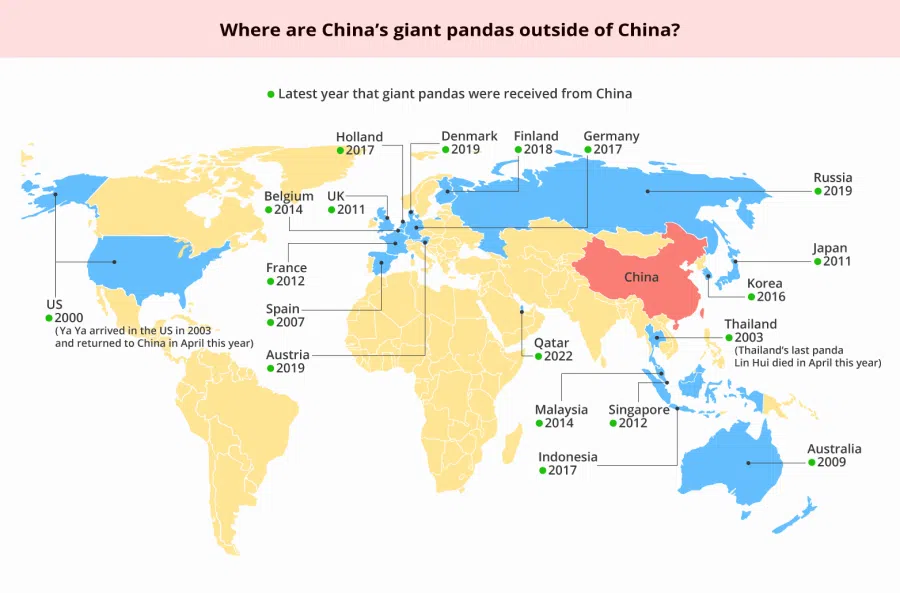
After 2008, the economic value of pandas grew even more. It became a way for China to establish long-term trade relations, with the lease recipients reflecting the shifts in China's diplomatic focus.
As China focused on entering the Asian market, its Asian neighbours became a key area for panda diplomacy. The timing of China's lease of giant pandas generally coincided with the effective dates of free trade zones and the signing of economic and trade agreements related to strategic resources such as natural resources and advanced technology.
For example, after the China-ASEAN Free Trade Area was launched in 2010, China leased giant pandas to Singapore and Malaysia in 2012 and 2014 respectively, and extended the lease of its pandas to Thailand which was due to expire in 2010.

In October last year, China leased giant pandas to Qatar in conjunction with the FIFA World Cup, expanding panda diplomacy to the Middle East for the first time and seeking to strengthen its relationship with the region. Chinese companies were also heavily involved in the construction of World Cup-related infrastructure in Qatar, including the main venue Lusail Stadium, which was jointly constructed by China Railway Construction Corporation and Qatar's HBK.
China warned then US President Barack Obama not to meet with the Dalai Lama, and the two US-born Chinese giant pandas, Tai Shan and Mei Lan, were taken back to China.
Recalling giant pandas to express tough diplomatic stance
Giant pandas are China's "ambassadors" for expanding diplomacy and, when necessary, are indirectly used by the Chinese government to express a strong diplomatic stance. This trend became more apparent after 2010 when China warned then US President Barack Obama not to meet with the Dalai Lama, and the two US-born Chinese giant pandas, Tai Shan and Mei Lan, were taken back to China.
After then US President Donald Trump took office in 2017, China-US relations were trapped in a downward spiral, and the China-US trade war began in 2018. Panda diplomacy, a symbol of friendship between China and foreign countries, was trapped in an awkward situation in Europe and the US, and a wave of giant pandas returning to China started to raise concerns. Bao Bao and Bei Bei returned to China from the US in 2017 and 2019 respectively; and so did Ya Ya, which was embroiled in a storm of controversy over her health.
The pandas living in Japan, Xiang Xiang, Yong Ming, Ying Bin (Sakurahama) and Tao Bin (Momohama), also returned to China this year. Other giant pandas whose lease agreements are set to expire this year include Yi Yi and Sheng Yi in Malaysia, and Yang Guang and Tian Tian in the UK.
China's growing power and assertive foreign posture have led to rising alarm in other countries, making this a time when China needs to promote panda diplomacy and make better use of its soft power.
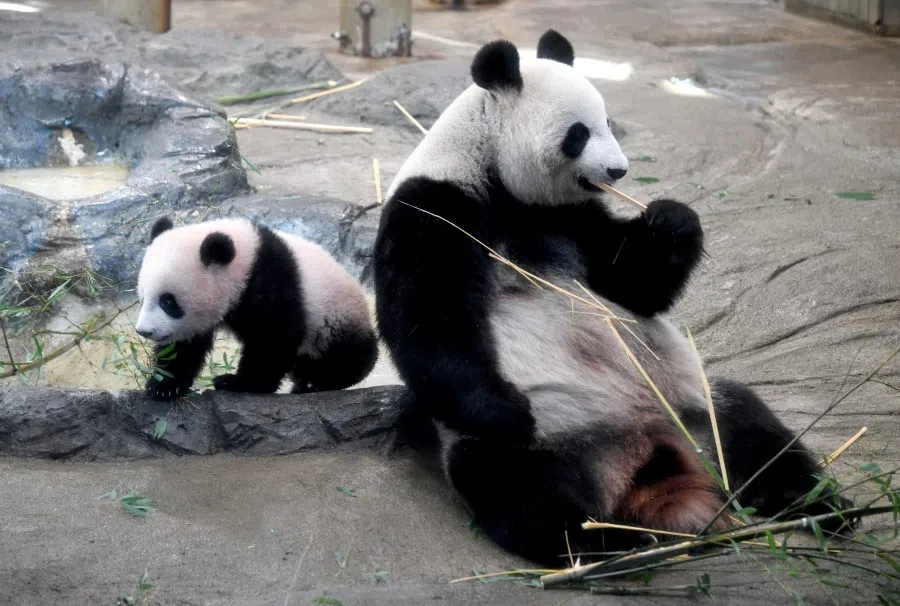
On the other hand, as China's diplomacy has evolved from "maintaining a low profile and biding time" (韬光养晦) in the Deng Xiaoping era to "daring to struggle" (敢于斗争) today, with some diplomats outrightedly calling themselves "wolf warriors". Coupled with China's growing national power, the outside world is questioning if China can continue to project an amiable and friendly image through panda diplomacy. As various countries are increasingly wary of China, is it the end of an era for China's panda diplomacy?
Historian Songster pointed out that the nature of panda diplomacy has evolved over the decades and appears to be shifting now as well. China's growing power and assertive foreign posture have led to rising alarm in other countries, making this a time when China needs to promote panda diplomacy and make better use of its soft power.
Associate Professor Chong Ja Ian of the Department of Political Science at the National University of Singapore believes that panda diplomacy has entered an age of decline.
He said that one of the considerations of panda diplomacy, like many other public diplomacy efforts, is to build goodwill or serve as a symbol of relations between states and attract positive public attention. However, the public's attention span is limited and public diplomacy efforts need to be fresh and novel. Panda diplomacy has been going on for years and has begun to lose its special appeal. In addition, China has experienced friction with many countries in recent years, so panda diplomacy can no longer have the effect it once did.
Nearly 70 years of panda diplomacy have turned the panda into a highly politicised symbol.
Different perceptions of the panda in China and the West
Over the decades, there has been a growing difference in the way pandas are perceived in China and the West. In China, giant pandas are round and cute Bing Dwen Dwens, the mascot for the 2022 Winter Olympics wearing a shell of ice. But to the Western media, the panda has gradually become a symbol of authoritarianism with a muscular body and massive dominance.
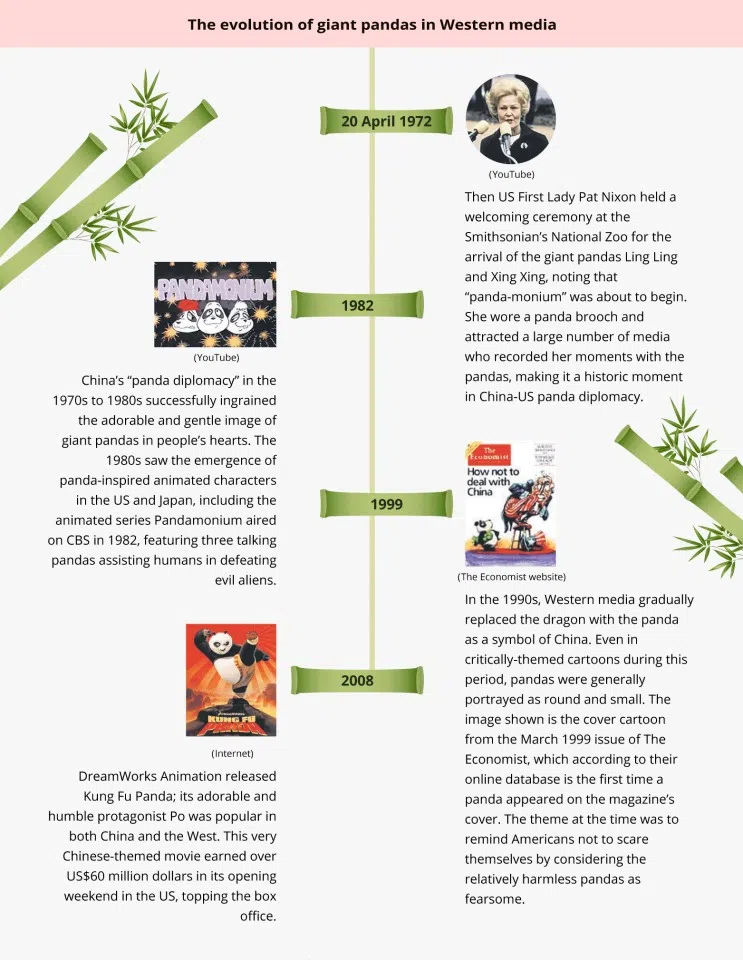
Nearly 70 years of panda diplomacy have turned the panda into a highly politicised symbol. Following intensifying economic and geopolitical tensions between China and the West, the image of the panda in Western media has changed as well.
Between the 1970s and the 2010s, photographs of Western leaders posing with giant pandas were common in Western media, including those of former US First Ladies Pat Nixon and Michelle Obama; former UK Prime Minister Edward Heath; former US President Bill Clinton; former German Chancellor Angela Merkel; and Canadian Prime Minister Justin Trudeau. But such images were rarely seen after 2018.

The giant panda's image in the cartoons and illustrations of Western media platforms has also changed dramatically. Zaobao found that the panda appeared ten times on the cover cartoon of The Economist from 1997 until today, with the March 1999 cover showing a small weapon-wielding panda facing a huge but cowering Uncle Sam. The September 2017 cover cartoon was a muscular and huge panda with cute dark eye circles drawn in the shape of the pirate's eye patch.
Fulbright scholar Selina Lee and senior researcher Ramona Li warned in a Foreign Policy article that such "visual shorthands are useful but also dangerous" as they "mirror the way America is depicted from the other side". For example, China Daily's political cartoons "fanatically use Uncle Sam or the Statue of Liberty in any opportunity to portray American hypocrisy, in the same fashion as Soviet media did during the Cold War".
In China, the giant panda has become a symbol of national pride and an increasingly protected and sensitive topic in the country's public opinion space.

In China, the giant panda has become a symbol of national pride and an increasingly protected and sensitive topic in the country's public opinion space. Since late last year, images of giant panda Ya Ya looking emaciated and losing fur at the Memphis Zoo in Tennessee sparked outrage on the Chinese internet, with netizens accusing the US of mistreating Ya Ya and demanding her return to China ahead of time.
After Ya Ya returned to China in April this year, Chinese authorities attempted to quell the controversy surrounding her. The China Conservation and Research Centre for the Giant Panda stressed in a statement on 29 April that the public's excessive personification of and empathy for pandas in fact interferes with their normal management protocols. The centre also urged the public to look at the management of giant pandas in a scientific and rational manner and to not start, believe or spread rumours.
Some analysts believe that the raging anti-US sentiment among the Chinese public over the Ya Ya incident reflects the enormous challenges that China faces in changing its wolf-warrior diplomatic path and softening its diplomatic approach.
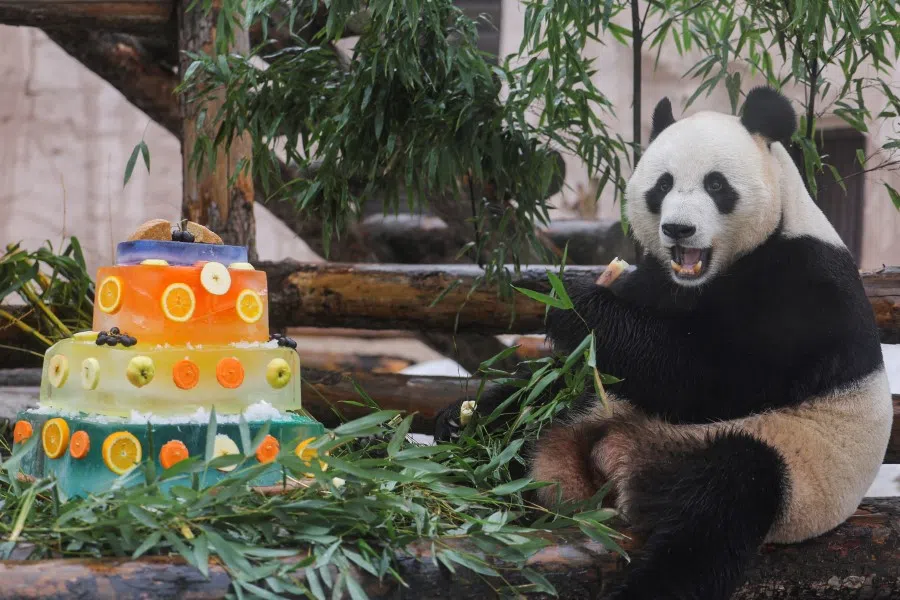
Historian Songster concluded that the Ya Ya incident reflects the Chinese people's growing nationalistic ownership of pandas. As the Chinese government has long described the gifting and leasing of pandas as a goodwill gift from the Chinese people, pandas have truly become "the people's pandas".
Associate Professor Chong analysed that intensifying China-US competition, surging nationalist sentiments within China, and restrictions on the flow of information with the outside world, have made it easy to create mountains out of molehills and attract the focus of public anger in China. Such intense sentiments will not only deepen China's assertive global image but could also reduce the Chinese government's flexibility in handling foreign affairs.
This article was first published in Lianhe Zaobao as "从招财萌猫变功夫熊猫 中国熊猫外交的变迁与困境".
Related: Universal Studios Beijing: With 5,000 years of culture, can China create its own theme park? | Will China and the US fight another wrong war, with the wrong enemy, at the wrong place and time? | When Beijing no longer minces its words about the US | Chinese butting heads with Western media: Irrational nationalism or deeds of justice? | Chinese commentator: China's nationalistic frenzy stems from an inferiority complex





